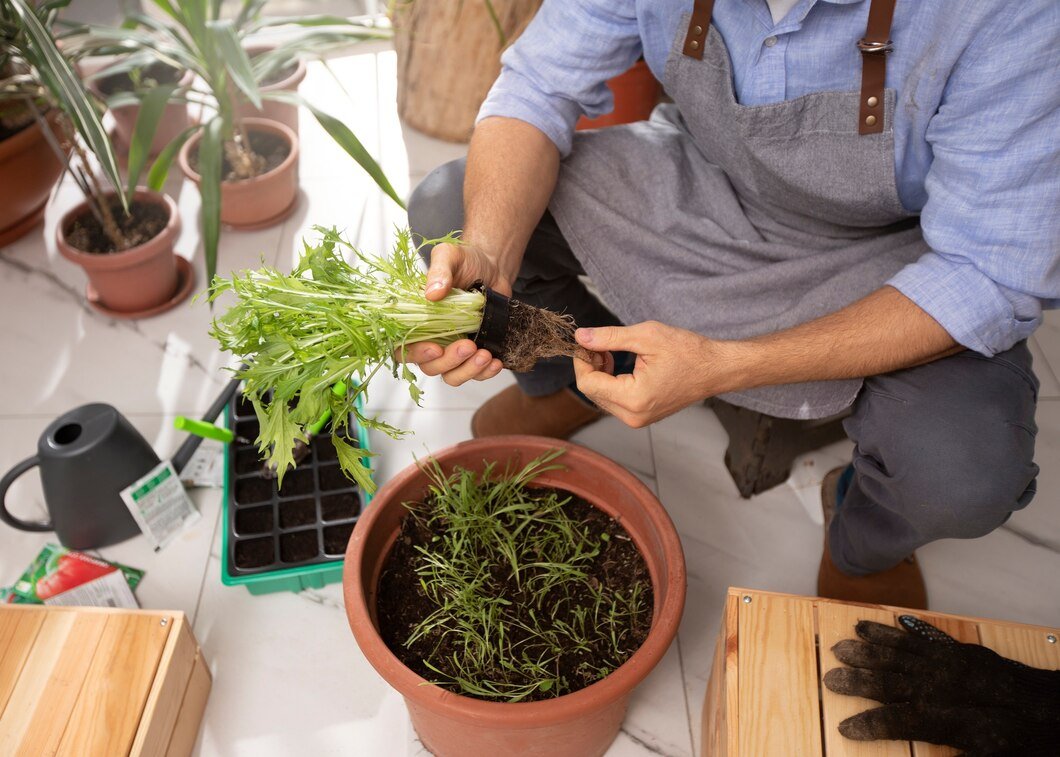Indoor herb gardening is a rewarding and practical hobby that ensures you always have fresh, flavorful ingredients on hand. Whether you’re an experienced gardener or just starting out, this guide will provide you with everything you need to grow herbs indoors successfully.
Why Grow Herbs Indoors?
Growing herbs indoors allows you to enjoy fresh herbs year-round, regardless of the weather outside. It’s cost-effective, adds greenery to your home, and provides a constant supply of aromatic ingredients for your cooking. Additionally, indoor herb gardens are perfect for small spaces, making them ideal for apartment dwellers.
Best Herbs for Indoor Growth
Not all herbs thrive indoors, but many do exceptionally well with the right care. Some of the best options include:
- Basil: Prefers a sunny spot and regular watering.
- Mint: Hardy and grows well in moderate light.
- Thyme: Low-maintenance and tolerates less water.
- Parsley: Thrives in partial to full sunlight.
- Chives: Easy to grow and requires minimal care.
- Cilantro: Prefers cooler temperatures and bright light.
Choosing the Right Containers
The type of container you choose is crucial for your herbs’ health. Ensure your pots:
- Have Drainage: Holes at the bottom prevent waterlogging, which can lead to root rot.
- Are Appropriately Sized: Most herbs need pots that are at least 6-8 inches deep.
- Are Made of the Right Material: Terracotta pots are breathable and help prevent overwatering, while plastic pots retain moisture longer.
For a decorative touch, consider colorful pots or upcycled containers like mason jars (ensure proper drainage).
Ideal Light and Temperature Conditions
Herbs require ample light to thrive. Here’s how to ensure they get the right amount:
- Light: Most herbs need 6-8 hours of sunlight daily. Place them near a south-facing window for the best results. Alternatively, use grow lights if natural light is insufficient.
- Temperature: Maintain a consistent temperature between 65-75°F (18-24°C). Avoid placing herbs near drafts, heating vents, or excessively cold windowsills.
Watering and Soil Tips
Proper watering and soil selection are critical for healthy herbs:
- Soil: Use a well-draining potting mix designed for herbs or indoor plants. Avoid garden soil, as it can compact in pots and restrict root growth.
- Watering: Check the soil’s moisture level before watering. Most herbs prefer slightly moist soil but not soggy. Overwatering is a common mistake, so water only when the top inch of soil feels dry.
Pruning and Harvesting
Regular pruning encourages growth and prevents herbs from becoming leggy:
- Pruning: Use clean scissors to trim stems just above a leaf node. This will encourage bushier growth.
- Harvesting: Harvest no more than one-third of the plant at a time to ensure continued growth. Morning is the best time to harvest for maximum flavor.
Common Problems and How to Fix Them
Indoor herbs can face a few challenges, but most are easy to resolve:
- Yellowing Leaves: Often a sign of overwatering. Adjust your watering schedule and ensure proper drainage.
- Leggy Growth: Caused by insufficient light. Move your herbs to a brighter spot or use grow lights.
- Pests: Common indoor pests include aphids and spider mites. Treat with a mild soap spray or neem oil.
Conclusion: Fresh Herbs Year-Round
Growing herbs indoors is a delightful way to bring freshness and flavor into your home. With the right herbs, containers, and care, you’ll enjoy a thriving indoor garden that enhances your cooking and brightens your living space. Start small, experiment with different herbs, and soon you’ll be reaping the rewards of your indoor herb garden!






